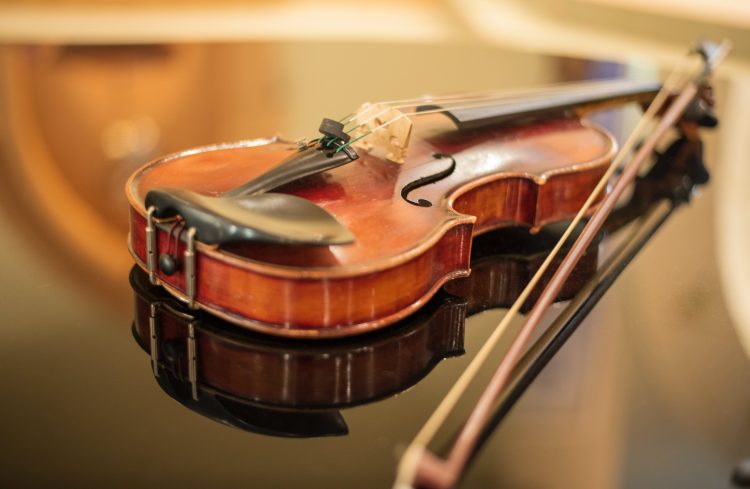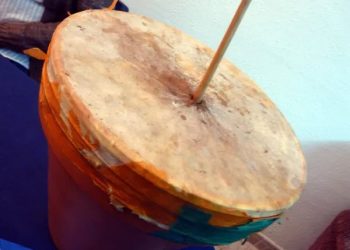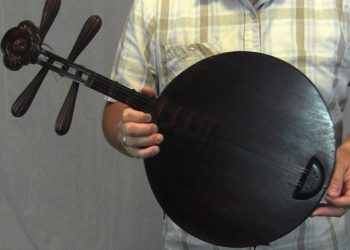Music has the power to transport us to different worlds and evoke emotions that words cannot express. From classical symphonies to modern pop hits, musical instruments play a crucial role in creating the sounds we love. While there are many musical instruments that are commonly known and widely used, some instruments are lesser-known, yet fascinating in their own right. One such group of instruments are those that start with the letter V.
In this article, we’ll be exploring the top 14 musical instruments that start with the letter V. These instruments come from diverse musical traditions and each has a unique sound and playing technique. From the Viola da gamba to the Vibraslap, we’ll take a deep dive into the history, structure, and playing styles of each of these instruments. We’ll also explore the cultural significance of these instruments and highlight some notable musicians who have used them in their music.
Whether you’re a seasoned musician, a music enthusiast, or simply someone who enjoys learning about the world of music, this article will take you on a journey through some of the most unique and interesting musical instruments in the world. So, join us as we explore the top 14 musical instruments that start with the letter V.
1. Valiha
The valiha is a traditional musical instrument of Madagascar. It is made from bamboo and has been played for centuries by the Malagasy people. This unique instrument has an interesting history, having originated in rural regions of the country. Today, it continues to be used for both traditional music as well as modern interpretations.
The construction of the valiha follows a simple yet complex design. Bamboo canes are split into four or more sections depending on length and then bound together with string or wire at both ends. The top end is notched to create a bridge that allows strings to vibrate freely when plucked. A wide range of tones can be created using this technique, making it versatile enough to play different types of music.
Playing the valiha requires skill and practice, but once mastered produces beautiful melodies and harmonies. To produce sound, one hand holds down notes while the other plucks multiple strings simultaneously creating chords which gives the instrument its characteristic warm tone. Additionally, musicians often add ornamentation such as sliding between notes or tapping along the neck of the instrument to provide greater expression to their playing style.
This fascinating instrument has become popular around the world due to its unique timbre and versatility within various musical styles. Whether experienced through live performance or recorded media, listening to a skilled player perform on a valiha is sure to leave you captivated by its beauty and charm!
2. Vargan
The vargan is another traditional instrument with a long history. It has been used by people all across Eurasia, from Siberia to the Middle East and beyond. This instrument stands out for its distinctive sound created by striking metal tines against a wooden frame.
Unlike the valiha which requires the use of both hands, playing the vargan only needs one hand to strike the strings while holding down notes with the other. The player’s control over dynamics and articulation allows them to create subtle nuances in their performance that can range from delicate melodic patterns to intense rhythms.
Adding further texture to music are techniques such as glissando (sliding between two or more notes), tremolo (rapidly repeating single notes) and vibrato (varying pitch within a note). All these techniques help bring out different aspects of this unique sounding instrument giving it an incredible range of expression.
By exploring its many possibilities, musicians have found ways to incorporate it into various musical genres around the world making it an invaluable part of any ensemble or solo artist’s repertoire! Its versatility makes it perfect for creating lullabies, folk songs or even full blown orchestral pieces – truly demonstrating why the vargan has become so beloved throughout time.
3. Veena
The veena is another traditional instrument that has been played in India for centuries. This stringed instrument, also known as a saraswati vina or simply the vina, is believed to have originated from ancient Vedic scriptures and was used by sages to commune with the divine. It consists of two large gourds covered in skin and connected by strings made from metal or gut. The player holds one end of the vina in their lap while strumming it with a long curved pick called a mizrab, creating beautiful melodies inspired by Indian classical music.
What makes playing the veena so special is its intricate yet accessible design – allowing players of any skill level to create meaningful musical passages within minutes of picking up this instrument. Additionally, each note can be bent slightly off-key thanks to frets on the neck which allow for subtle variations when sliding between notes. As such, experienced musicians are able to use these techniques to express complex emotions through melodic improvisation and unique rhythms.
Due to its mellow sound and ability to accompany songs without overpowering them, the veena has become very popular in both solo performances as well as ensembles over time. Furthermore, due to its small size it’s easy to transport compared to larger instruments like pianos or drum sets; making it an ideal choice for bands who want something they can take on tour with them!
From accompanying devotional hymns at temples around India, all the way out onto global stages – it’s clear why the veena has become such a beloved part of many different cultures’ musical heritage.
4. Vertical Flute
The vertical flute is one of the more modern instruments that has become popular in India over recent years. This small, hand-held instrument features a double reed design which allows for an incredibly wide range of sounds. It’s easy to learn and can be used by players from all skill levels – even complete beginners! The way it works is simple: as you blow into the mouthpiece, air flows through two sets of holes on either side creating an interesting vibrato effect that gives each note its unique character.
This feature makes playing the vertical flute both fun and challenging at the same time; allowing musicians to explore different techniques such as bending notes, sliding between octaves, or using complex rhythms for improvisation. Additionally, due to its size and portability this instrument can easily be taken anywhere – perfect if you want to get creative while out traveling or just need something to keep your hands busy during a long train ride.
The sound produced by the vertical flute is often described as being light and mellow yet still able to carry emotion across great distances when played correctly. As such, many people have come to love this instrument for solo performances or accompanying traditional Indian music during ceremonies or festivals. Furthermore, since it’s relatively cheap compared to other woodwind instruments it’s becoming increasingly popular with younger generations who are looking for affordable ways to express themselves musically.
Given its ability to create beautiful melodies with minimal effort, combined with its low cost and ease of use – it’s no surprise that the vertical flute has seen such success within India and beyond!
5. Vibraphone
The vibraphone is an iconic percussion instrument that has been used in various musical genres since the early 20th century. It consists of a series of metal bars mounted on a frame, which are struck with two mallets to produce tones. The sound of each bar can be adjusted by tightening or loosening screws underneath it – allowing for intricate tuning and creating unique sonic textures.
One thing that sets this instrument apart from others is its ability to sustain notes for extended periods of time. This makes it perfect for crafting melodic phrases and adding depth to music, as well as providing rhythmic support during performances. Additionally, many musicians choose to take advantage of the instrument’s versatility and use multiple mallet techniques such as rolls and glissandos to create complex rhythms and melodies.
The vibraphone also has a wide range of applications outside classical contexts; jazz groups often incorporate it into their ensembles while rock bands may use it to add texture and atmosphere to their songs. Its ubiquitous presence in modern music shows just how versatile an instrument it truly is!
No matter what genre you’re playing, the vibraphone can provide nuance and expression that will help bring your compositions to life. With its broad range of capabilities and beautiful sounding tones, this beloved instrument deserves a place in any musician’s arsenal – no matter what style they prefer!
6. Vichitra Veena
The vibraphone is a beloved instrument, but it isn’t the only one that can add depth and texture to music. The vichitra veena is another percussion instrument with an intriguing sound – its resonance providing a unique melodic backdrop for any performance.
This ancient stringed instrument has been used in Indian classical music since the 16th century, where it serves as both a solo and accompaniment instrument. It consists of two resonating gourds connected by seven strings made from animal gut or metal wires which are plucked using plectrums attached to the index fingers of each hand. This produces complex tones layered on top of each other, creating beautiful melodies.
Aside from producing melodic sounds, the vichitra veena also allows players to use glissandos (rapid slides between notes) and hammer-ons (picking one note while simultaneously pressing down on others), giving them more control over their playing style and allowing them to create intricate rhythms. Additionally, this instrument has many more possibilities than just being played solo – when paired with traditional drums such as tabla or mridangam, it can produce captivating musical pieces full of rhythm and melody.
The vichitra veena is truly an incredible addition to any ensemble – regardless if they’re playing jazz, rock or classical genres! Its expansive sonic capabilities allow musicians to explore new sounds and experiment with different styles that will bring life into their music.
7. Vielle
The vichitra veena may offer a unique and complex sound, but if you’re looking for something more rustic, the vielle is the perfect choice. This ancient bowed string instrument has been around since medieval times and can be found in many different cultures worldwide.
The vielle typically has four strings made of horsehair attached to a curved bridge with gut frets, which are plucked using a bow held in one hand while the other manipulates the strings’ tuning pegs. It produces hauntingly beautiful melodies that have an old-world quality like no other instrument – this makes it ideal for folk music as well as classical pieces.
Its most recognizable feature is its range: from low bass notes all the way up to high treble sounds, giving musicians plenty of opportunity to explore their creativity when composing or performing. Its ability to express emotion through vibrato and glissando techniques lets players really bring out the best of each piece they play on it – making every performance truly unique.
A versatile musical tool, the vielle continues to captivate audiences today with its timeless beauty. Whether it’s being used in traditional or modern settings, it adds a layer of richness to any ensemble – making it an invaluable addition for anyone looking for something special!
8. Vihuela
Continuing the exploration of ancient stringed instruments, we come to the vihuela. This member of the lute family dates back to 16th century Spain and is a favorite among classical guitarists looking for something with more depth. While sharing many similarities with its cousin – such as having six strings tuned in pairs and being held on one’s lap while played – it has some unique features that set it apart.
Most notably, the fretboard is shorter than a traditional guitar but longer than a mandolin or ukulele, as well as having double courses of strings rather than single ones. This combination allows musicians to explore different chord shapes and create intricate melodies without ever changing their tuning. Additionally, due to its small size, it can be carried easily from place-to-place making it an ideal choice for those who want something both portable and versatile.
The sound produced by this instrument is truly enchanting – its bright tones lend themselves perfectly to folk music but are equally suited for jazz or classical pieces too. Its ability to produce crisp arpeggios combined with warm bass notes makes every performance mesmerizing; no matter what style you’re playing!
No matter if you’re just starting out or have been playing for years, there’s something special about the vihuela that adds character to any piece of music – so why not give it a try? With its distinctive sound and ease of use, it’s sure to become your go-to accompaniment when creating new sounds!
9. Viola
Continuing our journey through the world of musical instruments, let’s take a look at the viola. This stringed instrument is slightly larger than its cousin, the violin and has an alto range that lies between that of the cello and violin. It offers players a rich sound with complex tones that can easily be detected in orchestral music.
The versatile nature of this instrument means it’s suitable for all kinds of genres – from classical to contemporary pop music. Its ability to project a strong tone while still providing subtle nuances makes it great for accompanying singers or playing solo pieces. Additionally, due to its size and weight, it’s easy to transport so you don’t need worry about lugging around a heavy case!
While learning how to play this instrument may require some practice, once mastered, it can provide hours of enjoyment as well as giving you access to many different types of repertoire. For example, if jazz is your thing then why not try out some improvisation? Or perhaps you fancy yourself more of a folk musician – if so then there are plenty of traditional songs waiting for you on the strings of your viola!
Whatever kind of music you’re into, discovering what this remarkable instrument is capable of will open up a whole new world full of possibilities. So go ahead and give it a go; who knows where your creativity might lead?
10. Viola D’Amore
Taking our exploration of musical instruments to the next level, let’s take a look at the viola d’amore. This unique stringed instrument is similar in shape and size to the viola but differs in its construction. Its strings are made up of both metal wire and gut-like material, giving it a distinctive sound that’s full of warmth. It has an extended range compared to other bowed string instruments and produces sounds ranging from soft tones to intense vibratos, making it incredibly versatile.
The instrument was first developed in Italy during the 18th century and quickly gained popularity due to its emotive capabilities – composers such as Mozart used this instrument for their most passionate compositions! While it may be harder to come by than some other instruments, if you can find one then learning how to play will provide an incredible experience. The gentle bow strokes required with each note create a truly captivating atmosphere which allows players to express themselves with great emotion.
The fact that there are so few people who know how to play this rare instrument means that those who do possess a special skill; they have access to a vast repertoire of pieces that often don’t get heard anymore due to their obscurity. If you’re looking for something different or want to bring your own creative flair into your music-making, the viola d’amore could be just what you need!
Playing this beautiful instrument offers many rewards – not only is it fun but it also gives musicians the opportunity to explore new territory musically and discover hidden gems within classical music history. From Baroque masterpieces through romantic ballads all the way up modern pop songs – whatever style you choose, expect hours of pure enjoyment when playing on this remarkable instrument!
11. Viola De Gamba
Our exploration of musical instruments continues with the viola de gamba. This bowed string instrument is similar in shape to a cello but slightly larger, giving it a unique sound and tonal color. It has six strings that are tuned like guitar strings, making it very versatile and allowing it to be played anywhere from classical music to jazz. Its wide range of tones and colors makes it great for accompanying singers as well as solo performance.
The instrument’s name comes from its resemblance to the medieval gambas – instruments commonly used during the Baroque period. Since then, composers have been using this beautiful instrument in many different genres including opera, chamber music, sonatas and concertos. In modern times there are even some recordings featuring electric versions of the viola de gamba!
Playing this rare instrument can be incredibly rewarding; not only does it bring out your creativity, but it also gives you an opportunity to explore new sounds. From romantic melodies to intricate solos – whatever genre you choose, expect hours of joy when playing on this remarkable instrument! Plus, learning how to play will give you access to repertoire often overlooked by other musicians due their obscurity.
Whether you’re looking for something unique or just want to try something new musically, the viola de gamba could be exactly what you need! With its warm tones and captivating atmosphere, playing this instrument offers endless possibilities for creative expression – so get ready for an unforgettable experience full of passion and emotion!
12. Violin
The violin is arguably one of the most iconic musical instruments. Not only does it look beautiful, but its sound can be heard in countless compositions over centuries – from classical masterpieces to modern pop songs. This instrument has been used by some of the greatest composers throughout history, including Vivaldi and Mozart, proving that it’s timeless!
This four-stringed bowed string instrument is tuned like a guitar with an E string at the bottom and A string on top. It produces a lively, vibrant tone which lends itself perfectly to solos or as part of larger ensembles. Its range also allows for great versatility – you can play everything from Bach’s concertos to jazz improvisations! Learning how to play this amazing instrument will open up many opportunities for creative expression.
Unlike other instruments such as piano or cello, learning the violin isn’t just about technique; it’s about feeling too. If you want to really get into playing this magnificent instrument, you need to not only learn notes and scales but also understand your emotions and convey them through your music. With practice comes understanding – so don’t give up if things seem difficult at first!
When mastered correctly, the violin can become one of your closest friends musically speaking. Whether accompanying singers or taking centre stage in a solo performance, playing the violin offers an unparalleled combination of emotion and technical proficiency that makes it truly special. So why wait? Explore this incredible world today and discover something new every single time!
13. Volynka
The Volynka is a traditional Russian folk instrument, also known as the “Russian Harp.” It’s an ancient stringed instrument that looks like a small harp and has anywhere from five to thirty-five strings. These can be tuned to different notes or strummed in unison to create chord progressions. The volynka’s sound is unique and hauntingly beautiful.
In Russia, it was usually played by blind beggar musicians who would travel around singing songs about love, nature, faith and life in general. However, its popularity spread during the 19th century and it eventually became part of classical music too. Today, there are several famous composers such as Tchaikovsky and Rachmaninoff who have written pieces for the volynka.
Playing this instrument requires some practice but once you get the hang of it you’ll be able to express yourself musically with ease. There are various techniques used when playing the volynka such as strumming chords along with single notes and hammering on certain strings to produce vibrato sounds. Additionally, many modern players incorporate electronic effects pedals into their performances which allows them to take their sound even further!
Whether you’re looking for something special to add texture to your existing music or searching for an entirely new way of creating melodies, the volynka will certainly offer plenty of possibilities. Its versatility makes it perfect for any musician looking to explore creative ideas within their own compositions – so why not give it a try?
14. Vuvuzela
The vuvuzela is a modern wind instrument that originated in South Africa and gained worldwide attention during the 2010 FIFA World Cup. It’s an unusual looking horn-like device made out of plastic or metal, with a wide range of notes capable of being played by blowing into it. Despite its simplistic design, the vuvuzela can produce incredibly loud and powerful sounds when blown correctly.
For many people around the world, this instrument has become synonymous with football matches as it brings about a sense of joy and celebration for both those playing the game and spectators alike. Furthermore, due to its distinctive sound, it serves as an excellent tool for creating atmosphere at any sporting event – particularly when used alongside other instruments such as drums and trumpets.
Not only does it have practical applications but it’s also great fun to play! Its simple yet effective design means anyone can pick one up and start making music right away. Plus, you don’t need any prior musical knowledge or technical skill; just some air flow control and basic rhythm skills are enough to get started.
If you’re looking for something new to add energy and excitement to your next performance then look no further than the vuvuzela – it’s sure to bring a unique twist to whatever genre of music you decide to perform!









